Review for Full Metal Panic - Ultimate Edition
Introduction
Who’d release an ultimate edition! Poor Anime Limited. They licence the Full Metal Panic franchise in its entirety, decide to bring it to the UK for the first time on Blu-ray, and for the first time in any form at all for The Second Raid, and a couple of weeks before its release date, a new Full Metal Panic Series gets announced in Japan, and it’s too late to make the box bigger to hold a future release of that fourth series. They can’t exactly rename it the Almost Ultimate Edition. The same thing happened to Anime Limited with Durarara!!
I have long wanted to watch Full Metal Panic though, ever since I caught the trailers for both the first series and Fumoffu on a couple of ADV discs that I had. My interest was first sparked around the time that ADV went out of business, and consequently their DVDs went out of print before I could get around to buying them. Besides, I was put off by the fact that the UK never got The Second Raid on DVD. Then around 2009/2010, Funimation picked up ADV’s licence for the franchise and released it on Blu-ray, and I would have imported, were it not for region coding confusion over The Second Raid (the first two series were Region AB, the first release of the Second Raid was Region A, the Classics release of the Second Raid is reportedly AB). Fortunately, Anime Limited have taken all the hassle out of it by releasing all three... I mean the first three seasons of Full Metal Panic on Blu-ray in the UK, guaranteed to work in a Region B player. At the time of writing, the only way to get all three series here is in the Ultimate Edition. Future stand alone releases for the first series and The Second Raid are lined up, but there’s a question mark over whether Fumoffu will get a single release.
Since there are three series to Full Metal Panic’s Ultimate Edition, I might as well review them separately.
Introduction: Full Metal Panic
A terrified girl on the run in a Russian republic may seem fortunate to have the help of a man in a jeep. But that’s not much when they’re being chased down by heavily armed helicopter gunships. Fortunately for her, there’s a guardian angel, Sousuke Sagara, a teenage mercenary piloting a giant robot for the Mithril organisation. Sousuke is skilled, dogged, and relentless, a consummate soldier of fortune. He’s not in any way ready for his next assignment though. On the surface it doesn’t seem much different, protect a girl named Kaname Chidori from those who want her for a mysterious military research experiment, something to do with The Whispered. But he and his fellow soldiers Melissa Mao and Kurz Weber have been assigned to peaceful Japan, and Sousuke’s mission is to attend the same high school as Kaname to keep an eye on her. This consummate soldier doesn’t know the first thing about being a schoolboy. Apparently guns aren’t allowed in Japanese schools...
24 episodes of Full Metal Panic are presented across three Blu-ray discs.
Disc 1
1. The Guy I Kinda Like is a Sergeant
2. I Want to Protect You
3. Lingerie Panic
4. Kidnap
5. Whispered – The Ones to be Whispered
6. Still Alive
7. Boy Meets Girl
8. Part Time Steady
Disc 2
9. Dangerous Safe House
10. Run, Run, Run
11. Behemoth Awakening
12. One Night Stand
13. A Cat and a Kitten’s Rock & Roll
14. Is Narashino Burning?
15. The Wind Blows at Home, Part 1
16. The Wind Blows at Home, Part 2
Disc 3
17. The Wind Blows at Home, Part 3
18. Deep Sea Party
19. Engaging Six and Seven
20. Venom’s Flame
21. Deep Trap
22. Jack-in-the-Box
23. Field of Giants
24. Into the Blue
Picture: Full Metal Panic
All the Anime are merely repackaging the Funimation discs; they don’t even have the All the Anime logo on, so there’s no change in the quality of the transfer. Not that it would make much of a difference, as Full Metal Panic dates from 2002, it’s an early digipaint show, from when anime studios were transitioning away from cel and paint, and just getting the hang of this new-fangled computer animation stuff. It’s also from when television was resolutely standard definition, and all television anime was being animated for 480 line NTSC format. Consequently, Full Metal Panic on Blu-ray gets the upscale treatment.
The benefits of getting this show on Blu-ray are then few, but I certainly do appreciate discs with a scratchproof coating. I do appreciate watching an anime with practically zero compression artefacts. I do appreciate the apparent re-mastering from the original source, which means we get rich and vibrant colour definition, beyond what you’d expect from DVD. I also appreciate the same re-mastering rendering the anime in smooth, fluid progressive format, as opposed to the interlaced NTSC DVDs that ADV US would have originally released, or the NTSC-PAL standards converted discs we would have got in the UK.
But the anime does show its age with its less than fluid character animation, particularly in conversation scenes which are little more than lip-flaps on static images. There’s also the short cut of frame zooms which looked obvious and bad on DVD, and just dreadful in HD. Instead of fully animating a scene with a zoom, the animators use a short cut sometimes of animating a scene at a set distance, and then when the director decides to zoom in for dramatic effect, they just enlarge an area of the frame, resulting in horrific loss of resolution. It isn’t a new trick, and it happens in live action too (see Robocop the Director’s Cut, where they enlarge Clarence Boddicker’s death for gory effect, and the screen suddenly fills with grain). But for 2002, Gonzo’s animation is watchable enough, with agreeable character designs, an immersive world design, impressive mecha and generally energetic and appealing animation.
The images in this review have been kindly supplied by All the Anime.
Sound: Full Metal Panic
After I finish watching an episode of Full Metal Panic, I get the urge to watch an episode of the A-Team. Strange... I’ll let you into a little secret. It’s actually music that got me back into anime in the early 2000s. US and UK TV had already started the trend of shrinking credit sequences down to get more adverts in, and it was a relief to find a medium that stuck to the 90 second theme song to sell more soundtrack and j-pop CDs, as well as buy the weary animators 3 minutes of time in each episode. But anime theme songs in the early 2000s also went through a phase with a lot of melody, guitars, the odd power ballad. In other words, it was like the 1980s chart scene all over again, except in Japanese, and that’s my pop music comfort zone. Full Metal Panic’s opening theme song is the epitome of this style of music, and I will never, ever skip an opening sequence. I might even watch one twice in a row if I feel the mood.
You get ADV’s original English dub in Dolby TrueHD 5.1 Surround English, with the original Japanese in 2.0 Stereo, with optional translated subtitles and a signs only track. Given the vintage of these discs, you won’t be surprised to see that the subtitles are of the thin white font variety that can on occasion be difficult to make out against busy backgrounds. Funimation have in the last few years changed to a font with greater clarity, and if there is one nit to pick about this release, the subtitle font would be it. I went with, and was happy with the original Japanese audio; the voice actors suited their characters, and rose to the challenge of portraying the comedy and drama well. The music as mentioned is certainly notable for its resemblance to that Mike Post theme, while the action certainly isn’t hard done by in the stereo. I gave the dub a few minutes of my time, and ADV’s dub has stood up well over the years; it certainly sounds in a different league from what Sentai are doing now. Also the 5.1 audio is more than just a stereo up-mix as so many 5.1 tracks were for anime back then, and indeed even now. This 5.1 audio really makes good use of the soundstage to convey the action, and fans of the dub will appreciate this show through a home cinema set-up.
Extras: Full Metal Panic
The discs present their content with animated menus. Disc 1 autoplays with a trailer for Heroic Age, Disc 2 with a trailer for Evangelion 1.11, and Disc 3 with a trailer for Fullmetal Alchemist: Brotherhood Part 2.
There are a fair few extras on Disc 3, beginning with the Kouichi Chigira x Shouji Gatou Special Interview. This lasts 23:22 and is presented in 1080i, and was recorded for the Blu-ray release of the show, about the time that the show’s director and the writer of the FMP light novels were collaborating on The Tower of Druaga for Gonzo. It’s a retrospective look at the show, but mostly a light and friendly chat.
You get 12 of the Japanese anti-piracy warnings, selectable separately, or in an 8:23 play all chunk. They’re presented in SD, as are around half a minute of TV spots for the show. You get the first textless opening for the show, and the textless closing.
Finally there are Funimation trailers for Hetalia Axis Powers, Initial D, Soul Eater, Nabari no Ou, and Kaze no Stigma in SD, and Eden of the East and Dragon Ball Z Kai in HD.
Conclusion: Full Metal Panic
Enter the obligatory nostalgia paragraph about how they don’t make ‘em like they used to, how the sunny days were sunnier when I were a lad, how the TV was better, indeed how the anime was better. I recently had the problem with Mobile Suit Gundam of trying to engender nostalgia for a show that I had never seen, and you might have thought that it would be the same with Full Metal Panic, nearly fifteen years old at this point, a show that I never saw the first time around. But I have to say that I loved it. The early 2000s was when I got back into anime in a big way, and while I hadn’t seen it before, this is the animation style, the storytelling style, and the character archetypes that I’m most comfortable with. Rightly or wrongly, I had the sense back then that there was a lot more creativity in anime, that the creators infused their shows with more of their personality, and not every show conformed in some way to audience expectations. These days when I see a Production Committee named in an anime credit sequence, I really do believe that the show has been put together by committee to tick boxes off a checklist.
Full Metal Panic isn’t like that. It feels very much like a unique story, the vision of Light Novelist Shouji Gatou brought to life by director Kouichi Chigira. It goes its own way with the narrative, often in unexpected and surprising ways, its characters don’t conform to the usual archetypes, and if it does misstep, it does so doing its own thing, not following a well trodden and familiar path. Much as I enjoyed Full Metal Panic for its story and its characters, the animation style and the delightful music, what I appreciated most about it was the chance to discover a story again, and to be surprised.
Full Metal Panic wrong-foots the viewer right from the beginning, with an action packed prologue showing the consummate professional mercenaries at work, rescuing a runaway girl from evil experimenters in a former Soviet republic. The story proper begins when the mercenaries get a new mission, protection detail for Kaname Chidori in peaceful Japan. At this point you might think that the show is going to be a romantic comedy, with a fish-out of water mercenary masquerading as a high school student, infuriating the target of his protection by his sheer mule-headedness, and the two gradually coming together through various misadventures and misunderstandings, and the odd villainous attempt on Kaname Chidori on Japanese soil.
The first few episodes certainly give that impression, but then the class trip to Okinawa gets hijacked, and suddenly things are a lot more serious, with the introduction of the series villain, Gauron, and a greater focus on the Mithril mercenary group that Sousuke works for. There’s less room for clumsy high school comedy when lives are at stake, and the show really goes for the action and the emotional investment, having spent the first few episodes of comic antics making us like the characters.
The first half of the series pretty much alternates between school life and the various threats that Kaname and Sousuke have to deal with, but the balance pretty quickly shifts away from the school comedy to the serious side of the story, the Mithril group, Gauron, and the Whispered, the reason why Kaname is targeted. The show never loses its comic edge, but the more comic silliness of the school setting is not really a major part of the show. That’s one thing that put me off balance, especially in the first half, as I would oddly expect an action episode where there was a comedy episode and vice versa.
The second half of the series is more centred on the Mithril group; it’s where we really get to know characters like the submarine commander Teletha Testarossa, and Sousuke’s teammates Melissa, and Kurz. It’s where we get to the meat of the story, learning about Sousuke’s past, why he is the way he is, the threat that Gauron poses not only to Kaname but also to the Mithril group, and the story builds up to the inevitable confrontation.
For such a military and tech heavy show, Full Metal Panic is thankfully light on jargon and technobabble, but in certain, story specific respects, it holds its cards close to its chest. I certainly found it irksome that while we did get to see the effects of the Whispereds, and the Lambda Driver, the series doesn’t fill in the background about these things, at least not the first series. Also, I have to admit that I did enjoy the high school comedy aspect of the show, and did feel disappointed that there wasn’t more of it. Evidently I was not the only one, as they went and made Full Metal Panic Fumoffu next.
Full Metal Panic is the kind of giant robot show that I like, the kind where the hardware takes a back seat to the characters. I was expecting Full Metal Panic to be funny, but it’s also action packed, dramatic, and it’s got the quieter character moments that get you invested in the show. It’s also got a serious, scene stealing villain, the kind of villain that Hollywood would look to the UK for, Alan Rickman most probably...
8½/10
Introduction: Full Metal Panic? Fumoffu
Full Metal Panic and The Second Raid follow the lives of Whispered Kaname Chidori, and her part-time bodyguard Sousuke Sagara as the mercenary group Mithril, for whom Sousuke works, do battle with various foes to safeguard world peace. The normal state of play ought to be high school, with Kaname trying to lead a normal life, and constantly failing because Sousuke has no idea what a normal life should be. The trouble is the evil masterminds keep trying to capture Kaname, and Sousuke keeps getting called away on missions. But if you appreciate the comedy in Full Metal Panic, then you will have a fond affection for those rare glimpses of school life in the first series and The Second Raid, where the laughs are in greatest abundance. Full Metal Panic? Fumoffu is all about the high school hijinks of Kaname and Sousuke, as she tries to lead a normal life, and is constantly thwarted by her paranoid, military, gun crazy bodyguard. And it turns out that the rest of the school is just as crazy.
12 episodes of Full Metal Panic? Fumoffu are presented across two Blu-ray discs.
Disc 1
1. The Man From the South / A Hostage With No Compromises
2. Hostility Passing-By / A Fruitless Lunchtime
3. Summer Illusion of Steel
4. The Hamburger Hill of Art / Single-Minded Student
5. The Pure Yet Impure Grappler / Trespassing on Good Faith
6. The Hard Sell Fetish / The Patient of Darkness
7. The War Cry of Excessiveness
8. A Goddess Comes to Japan (Part 1: The Suffering)
Disc 2
9. A Goddess Comes to Japan (Part 2: The Hot Spring)
10. A Fancy Without Honor or Humanity
11. Uncontrollable Bluebird
12. 5th Period Hot Spot
Picture: Full Metal Panic? Fumoffu
Full Metal Panic? Fumoffu gets a 4:3 pillarboxed 1080p transfer, just like the first series. Unlike the first series however, this is where the animation duties switched to Kyoto animation, and that immediately comes across in the higher quality, and the warmer feel to the colour palette, although it is still recognisably Full Metal Panic, the character designs remaining the same. The image is clear and sharp throughout, a decent enough upscale effort, with little in the way of compression, banding and the like.
Sound: Full Metal Panic? Fumoffu
You have the choice between Dolby TrueHD 5.1 English and 2.0 Japanese with optional subtitles and a signs only track. Once again we have the thin white font for the subtitles that can get lost against busy backgrounds. I went with the Japanese audio and was happy enough, and what I tried of the English dub was up the same standard as the other two series. The dialogue is clear, the music comes across well, and the stereo offers a nice bit of space for the comedy action, and the severe pummelling of a socially inept mercenary by a frustrated high school girl. You get some more faux A-Team music, but this part of the release has a few flubs, notably missing subtitle translations at 2.03:12, 2.27:42, and 2.29:03 on disc 1. I had to switch to the English dub to get the gist.
Extras: Full Metal Panic? Fumoffu
Once again we get animated menus. Disc 1 autoplays with a trailer for Eden of the East. Disc 2 autoplays with a trailer for Slayers Revolution, and you’ll find further trailers for Linebarrels of Iron, Eden of the East, Hetalia Axis Powers, Jinki Extend, Oh Edo Rocket, Devil May Cry, Fullmetal Alchemist: Brotherhood Part 2, and Sengoku Basara Samurai Kings
You’ll also find the textless credits, and 51 seconds of original Japanese TV spots.
Conclusion: Full Metal Panic? Fumoffu
Comedy is in the eye of the beholder. It always has been, and things that make some people laugh tend to fall flat for others. Given that we’re talking different cultures on different sides of the world, different idioms, different vernaculars; it’s no surprise that the average anime comedy will fall flat for me. I sat as stone-faced as its protagonists through Cromartie High School, and while I might have fallen for the hype of Nabeshin and his afro the first time I watched Excel Saga, that didn’t happen the second time, and his comedies increasingly fail to make me smirk. Some anime comedies do make me smirk, some even make chuckle, laugh even, and possibly guffaw. Full Metal Panic? Fumoffu is the first anime to ever make me bust a gut. We’re talking painful, wheezing laughter here, the kind where you have to pause the disc, let it all out, lest you miss the next five punchlines in the midst of your mirth.
It’s down to the central pairing of Kaname Chidori and Sousuke Sagara, who are as classic a double act as you might get, although I guess they are a traditional Manzai pairing given where the show was made. But I could see the long comedy heritage stretching back to Laurel and Hardy in the way that they interact. Sousuke is the socially inept idiot, deadpan and insistent on approaching the world through his military mindset, despite the fact that he’s dealing with civilian society now. He just doesn’t get the social graces, something which infuriates Kaname no end, and she is quick to anger at his antics, ready to deliver punishment in the form of a beating which seems to indicate that she is actually in little need of a bodyguard, or she wields a harisen (large paper fan) with such dexterity that it’s more of a lethal weapon than any of the firearms and rocket launchers that Sousuke keeps secreted on his person.
You then throw these two characters in the midst of the bizarre situations and oddball characters in and around school, and you have a recipe for comic mayhem. I’ll avoid mentioning the stories in detail, as I’ll be tempted to share some of the funnier moments, some of the pop culture references that tickled my fancy, and that really would amount to spoilers. You do get a variety of stories here, five of the episodes are split in two, so you get 10 short stories, there’s a two part story where Teletha Testarossa pays a visit, and the rest are single episode length tales.
I have to admit that my appreciation started to wane around episode 9, which is as traditional a hot springs episode as you can get, albeit with landmines, and that sense of tiredness followed through into the following Yakuza episode, maybe one Bonta appearance too many, but these were still laugh out loud funny episodes. Fumoffu picked itself back up for the final two episodes, and it very much went out on a high.
10/10
Introduction: Full Metal Panic - The Second Raid
It turned out that defeating Gauron didn’t end the threat to Kaname Chidori. Professional mercenary Sousuke Sagara still has his hands full acting as Kaname’s bodyguard in high school (and he still lacks the social graces that Kaname futilely tries to beat into him), and hopping off on missions for Mithril. The threat of the Black Technology is still out there, and the mysterious Whispered such as Kaname and Captain Teletha Testarossa of the Mithril submarine Tuatha de Danaan are still targets for various nefarious characters. Mithril had the advantage of possessing military hardware and technology ten years ahead of everyone else, but on a mission to a third world country in the middle of civil unrest, Mithril suddenly faces attacks from comparable forces. Someone’s been supply hi-tech weapons to counter Mithril. On top of that, someone’s spying on Kaname Chidori as well.
13 episodes plus the OVA are presented across two discs.
Disc 1
1. The End of Day by Day
2. The Scene Below the Water
3. Labyrinth and Dragon
4. Daylight
5. Beautiful Sicily
6. Edge of Heaven
7. Left Behind
8. Jungle Groove
9. Her Problem
Disc 2
10. Hong Kong in Two
11. His Problem
12. Burning Hong Kong
13. Continuing Day by Day
Picture: Full Metal Panic - The Second Raid
Made in 2005, the change in animation studio from Gonzo to Kyoto Animation really does tell in this 1.78:1 widescreen 1080p transfer. For one thing, the aesthetic value that KyoAni bring to the show is really apparent here, with the animation having a sense of depth, and visual warmth that the first series lacked. It’s as if the image glows. The level of detail, consistency of character animation and the energy of the action sequences are all at another level completely. And for four episodes, I was half convinced this was an HD source, until the shimmer on some fine detail, a hair of aliasing reminded that this show too is an SD upscale. This is an upscale almost on a par with shows like Baccano. Almost... Alas it’s the prevalence of digital banding that disappoints here, especially in darker scenes, usually in AS cockpits. Also the jerkiness in pans and scrolls, particularly in the opening credits, is a reminder that while it might be a 24fps progressive format, it’s been created from a 30fps NTSC source.
Sound: Full Metal Panic - The Second Raid
This time there are thematic references to Airwolf, although it certainly doesn’t get the full homage that The A-Team theme got for the first two series. You have the option of Dolby TrueHD 5.1 Surround English and Japanese this time, with optional subtitles and signs, again in that thin white font that can easily be obscured by busy backgrounds. The dub is on a par with that in first series as you might expect, but the Japanese audio really benefits from what I assume is a native surround soundtrack, rare in anime. This is an action heavy show, and the impact and envelopment of the audio is very much appreciated.
A small issue might be a couple of barely noticeable drop-outs in the Japanese audio in episode 6 around the 1:59.50 mark.
Extras: Full Metal Panic - The Second Raid
The discs present their content with animated menus, Disc 1 kicks off with a trailer for Gunslinger Girl Il Teatrino, while Disc 2 has a trailer for the live action Mushi-shi movie (note that while the trailer may be in HD, the US release is DVD only).
Oddly, the episode titles in the menus differ in some cases from the translated episode titles in the episodes and next episode previews. I’ve used the menu titles.
On disc 2, along with the extra features, you’ll find further trailers for Romeo x Juliet, Kaze no Stigma, the original Full Metal Alchemist OVAs, Burst Angel, Big Windup, One Piece, Pumpkin Scissors, and Nabari no Ou.
You get more than the usual level of extras here, which explains why disc 2 is a dual layer Blu-ray.
Bonus Episode 000 is 5:52 long and is presented in SD, and offers a brief prequel to the second series which segues into a trailer.
Bonus OVA: A Relatively Leisurely Day in the Life of a Fleet Captain lasts 29:26 and is in HD. It’s a light bit of nonsense that follows Tessa around the submarine and the base, trying to comprehend just what she did the night before after Melissa introduced her to beer.
You get the textless credits for the show as always.
Dawn of the Light Novel lasts 26:02 SD, and is a featurette that looks at the light novel phenomenon which had just exploded at the time in Japan, both generally and with a focus on Full Metal Panic as a significant early exemplar of the medium.
By far the most substantial extra is the Location Scouting in Hong Kong featurette, which lasts 2hrs and 26mins, divided into seven chapters which were the original featurettes on the DVDs. As you might expect, it’s a lot of footage of the production team, the director and the writer wandering around Hong Kong looking for suitable locations in which to set certain action sequences from the latter half of the series. It’s narrated by the director and writer, and if you’re not into these sorts of featurettes, and are unkind, it might come across as someone’s holiday slides.
This sounds like a lot of on-disc stuff, and it is. Only the original US DVD release had even more in the form of Japanese voice actor commentaries on all of the episodes. If you’ve previously imported the DVDs and are looking to upgrade to Blu-ray, you might want to hold onto those TSR discs.
Conclusion: Full Metal Panic - The Second Raid
The question that storytellers often have to deal with when it comes to sequels is just how do you top an awesome villain? The smart answer is that you don’t. You just try to tell the best story that you can, and hope that people appreciate it. So while Die Hard 2 could never match the flamboyance and screen presence of Hans Gruber, it still stands up as a solid action movie. But the temptation is to up the ante, either by adding more than one, which is what most superhero movie sequels tend to do (Why have Lex Luthor when you can have Lex Luthor and Zod), or they introduce a villain even more ‘awesome’ than the one in the first movie, making him eviller, making the violence more brutal, and they end up crossing the line, pushing the envelope beyond credibility. That’s what happens in Full Metal Panic: The Second Raid, which had to outdo the awesomeness of the season 1 villain, the memorable Gauron.
The Second Raid does both, upping the evilness and the quantity. Fortunately Leonard Testarossa (a certain Captain’s brother), only appears on screen long enough to establish his enigmatic ambiguity, and tantalise for the next arc of the story, hopefully being made now. It’s the other villains, creepy psychotic twin, Yu Fan and Yu Lan who dish out the violence with such brutality and visceral impact on screen, that you want to go knocking on the BBFC’s door, and give them a flick to the forehead, “What were you thinking, 15?” But worse for me is the arms dealer, and main antagonist of the series, Gates. This is a man who will kill one of his subordinates for saying the wrong thing. My suspension of disbelief shatters at such events, as given an evil boss like that, all henchmen would seriously consider unionising, if not looking for alternate employment altogether. Seriously, why would anyone work for a person like that!?
Fortunately The Second Raid is more than just the sum of its villainy, and let’s face it, even if the villains are over the top, pantomime daft, that doesn’t mean that they aren’t watchable. The Second Raid also delivers in terms of action, and excitement, made all the more thrilling by Kyoto Animation’s sublime work on the visuals, transcending Gonzo’s great efforts on the first season. It’s a great story, and the Hong Kong locale certainly works in diversifying the anime, broadening its scope. The level of detail and realism in the Hong Kong cityscape is good enough to put me in mind of several Hong Kong movies I have seen. You can half imagine a Jackie Chan action sequence taking place in the anime.
The real draw of course is the Kaname Sousuke relationship, made a tad more complicated with Tessa’s own uncertain feelings towards Sousuke. If the first season was about putting this mismatched pair together, with Sousuke continually annoying and irritating Kaname to distraction, and with Sousuke’s determination to protect Kaname increasingly coloured by his growing feelings for her, then this follow up season is about pulling them apart, making them face the feelings that they both previously refused to acknowledge head on. It’s a nice, enjoyable development to the story, with just the one misstep of a lookalike interlude; another one of those ‘suspension of disbelief wobblers’.
The overarching story develops too in an intriguing way. The first series was deliberately shy on expanding on its story about The Whispereds and Black Technology, and The Second Raid is just as circumspect, but it does drop enough in the way of tantalising tidbits to keep you hooked, making you want to watch more. Certainly you get to know a lot more about Sousuke Sagara’s past here, far more than revealed in the first series. It’s a show that is very satisfying with the way that it develops and concludes its story, but it once again leaves you wanting more, which makes it a useful development that a fourth season is in production now.
8½/10
In Summary
I have one or two minor qualms about this release. The first is that while All the Anime have announced stand-alone releases for the first series and The Second Raid, they are yet to commit to a stand-alone release of Fumoffu, which given that I think it’s the best thing in this collection is a tad disappointing. The second thing is value for money, given that these are merely the Funimation discs repurposed (and have been available separately for some time). This is an Ultimate Edition, with Ultimate Edition pricing, therefore given the nature of the disc content, the value for money will be in the artbook, and the quality of the packaging, neither of which I have seen to comment. I do have a small wish that the All the Anime could have reworked the subtitles to a font with greater clarity (and fix those missing captions in Fumoffu).
All that aside, these shows are fantastic, coming from a period where light novel adaptations weren’t quite so indulgent, where story and character trumped cliché and stereotypes. The characters in Full Metal Panic are very well-written, the story is engaging, the action thrilling. Both of the main Full Metal Panic series are well-accomplished fusions of comedy, action, and drama with a hint of sci-fi, and work to appeal to broader audiences as anime once did (before it settled for aiming each new series at a particular niche). But then there is Fumoffu, which some might consider just a bonus appendage to the two main series. It’s far more than that. Those two shows, FMP and TSR might be brilliant in their own right, but Fumoffu is the best thing in this Ultimate Edition, the funniest anime comedy I can remember watching. I missed out on the Full Metal Panic franchise the first time around, and if you’re like me, don’t make that mistake twice. Now for All the Anime to license the fourth series...









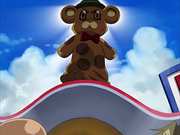

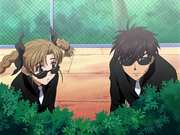


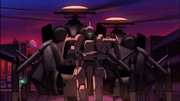


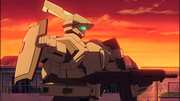













































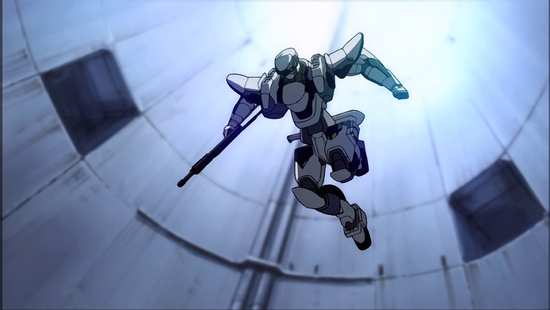



Your Opinions and Comments
Be the first to post a comment!